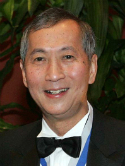| Abstract: |
Recent clinical data indicate that tumor hypoxia negatively affects the treatment outcome of both radiotherapy and surgery in various cancers, emphasizing the need for noninvasive detection of tumor hypoxia. Several studies have shown an increased uptake of FDG in hypoxic regions of xenografts, suggesting the use of PET with FDG as a potential technique. In this study, we examine the mechanism underlying the hypoxia-induced increase of FDG uptake in the human breast carcinoma cell line MCF7. Methods: The uptake of 3H-FDG into MCF7 cells was determined after incubation under hypoxic (0% oxygen) or normoxic conditions, with or without redox agents, for varying time periods. In addition, the effects of the redox agents on the glucose transporter activity and the hexokinase activity were determined independently, and the effects of hypoxia on glucose transporter protein and hexokinase levels were assessed. Results: A more than twofold increase (2.53 ± 0.79; P < 0.005) in 3H-FDG uptake was observed under hypoxic conditions, but no changes in the cellular levels of glucose transporter proteins or hexokinase were observed. A reducing agent, dithiothreitol (DTT), also caused an increase in 3H-FDG uptake but failed to affect uptake under hypoxic conditions. This indicates that the mechanisms by which hypoxia and DTT affect 3H-FDG uptake might be the same. The oxidizing agent p-chloromercuribenzenesulfonic acid (pCMBS) had no effect on 3H-FDG uptake under normoxic conditions but counteracted the effect of hypoxia. DTT caused an increase in glucose transporter activity, whereas it had no effect on hexokinase activity. pCMBS had no effect on either glucose transporter activity or hexokinase activity. Conclusion: The hypoxia-induced increase in 3H-FDG uptake in MCF7 cells is the result, in part, of an increase in glucose transporter activity resulting from the modification (reduction) of thiol group(s) in the glucose transport protein(s). Modulation of hexokinase activity is probably not involved in the hypoxia-induced increase in 3H-FDG uptake in these cells. |






